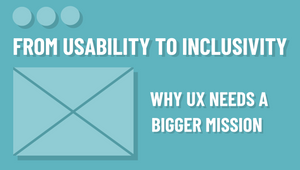
Meta’s Spatial SDK: Supercharging XR Innovation for Brands and Developers

Image credit: Dima Solomin via Unsplash
While most of the attention and discussion during Meta Connect 2024 revolved around the Orion AR glasses prototype, there was another announcement that could help pave the more immediate steps to XR adoption on a larger scale. The Meta Spatial SDK, announced at the event and available now, can have a tremendous impact for brands and developers looking to dive into the XR space, lowering development costs, reducing the time to market and facilitating rapid iteration.
The Meta Spatial SDK enables apps or experiences to be extended through 3D elements that heighten or elevate the user experience, such as 3D rendering, video passthrough, hand controllers, physics, and spatial audio - thus enhancing user interaction and engagement.
Effectively this democratises the creation of Spatial Computing experiences and widens the developer ecosystem, lowering the barriers to enter the space and making it easier to port 2D apps into 3D environments.
Why this matters
Accessibility of the tech stack has always been a challenge when considering developing for Quest.
It's been almost two decades since the launch of the AppStore, closely followed by the Google Play Store in October 2008. A whole ecosystem has since been built around these stores, facilitating design, development, and distribution, making mobile apps well-established in terms of design practices, technology stacks, and relative tooling.
The great majority of these apps can be described as 'flatscreen apps',
as they have historically left any exploitation of real-time 3D rendering to games and game-like applications. While we have seen some of the more recent AR experiences driven by platform-led initiatives, these still remain few and far between.
Meanwhile, game developers have been able to leverage ever-evolving game engines, such as UNITY and UNREAL ENGINE, which have helped abstract from the hardware and OS, democratised the development process and pipeline and encouraged a proliferation of indie-style developers as well as helped establish a massive expansion of the total addressable market through the FreeToPlay business model innovation in particular.
While XR devices traditionally have been built on Android platforms (until the introduction of Apple's Vision Pro, which extends the native iOS ecosystem), it has been mainly developers with a game development background who have migrated to the platforms, leveraging their knowledge of 3d real-time simulation/rendering and ability to work with game engines. The Meta Spatial SDK removes the barrier to build for many current mobile and traditional developers on the Quest.
Technical Details
Meta's Spatial SDK, extends native Android development. A first foray into the world of XR, this could be represented by porting (adapting) a mobile app 'as is' to the new platform, simply resolving any specific platform quirks or, for the more adventurous, extending an app's functionality with elements that lightly leverage the possibilities and opportunities of spatialised experiences.
Technically, the SDK includes a Kotlin (a Java-like language for Android)-based API and custom tooling, which allows 2D native apps to be reimagined and reimplemented as panel layouts in 3D space (read Mixed Reality).
Additionally, it allows those apps/experiences to be extended through 3D elements that heighten or elevate the user experience, such as 3D rendering, video passthrough, hand controllers, physics, and spatial audio - thus enhancing user interaction and engagement.
The versatile nature of the tech stack, which the SDK supports, allows for native Android apps to be ported over to the ecosystem and published on the Horizon Store.
Developers are no longer obliged to contend with 3D engine-based development, which drags them away from the tech stacks and skillsets they have invested in throughout the mobile app era.
In a multi-platform approach to distribution, XR can now contend more robustly as a form factor for developers as they identify a value proposition that justifies exclusive content development.
In short:
Meta's Spatial SDK presents a unique opportunity for brands.
Experimenting in XR is no longer a plunge into the unknown. With incremental effort, brands can extend existing audience engagement strategies to include XR. Existing mobile experiences within the mobile space can be adapted for the format, reducing risk and time to market and improving the ability to test and learn before going all in.
In other words, brands can dip their toe without developing from the ground up and be in a prime position to extend their reach as an emerging opportunity swiftly becomes a business imperative.
The Astral City Effect
Astral City is a product development and creative services company that was built specifically for this upcoming shift. With the brand-centric solution provision of an Agency, the technical build skills of a software development studio and the IP development focus of a product house, Astral City brings together a blend of approaches to ensure that the needs of a wide spectrum of partners can be met, no matter where they are on their spatial journey.
We can work with you to demystify the lay of the land, identify opportunities which resonate with your business objectives, and guide and support you throughout the test and learn loop.
Recognising that all sectors and businesses have their own unique opportunities and challenges, our approach ensures that our partners are well informed, properly upskilled and totally ready for every technology shift that is upcoming.
Together, we can create impactful, joyful, and useful content and experiences through a human-centric approach that equally prioritises beauty, utility and genuine connection.












